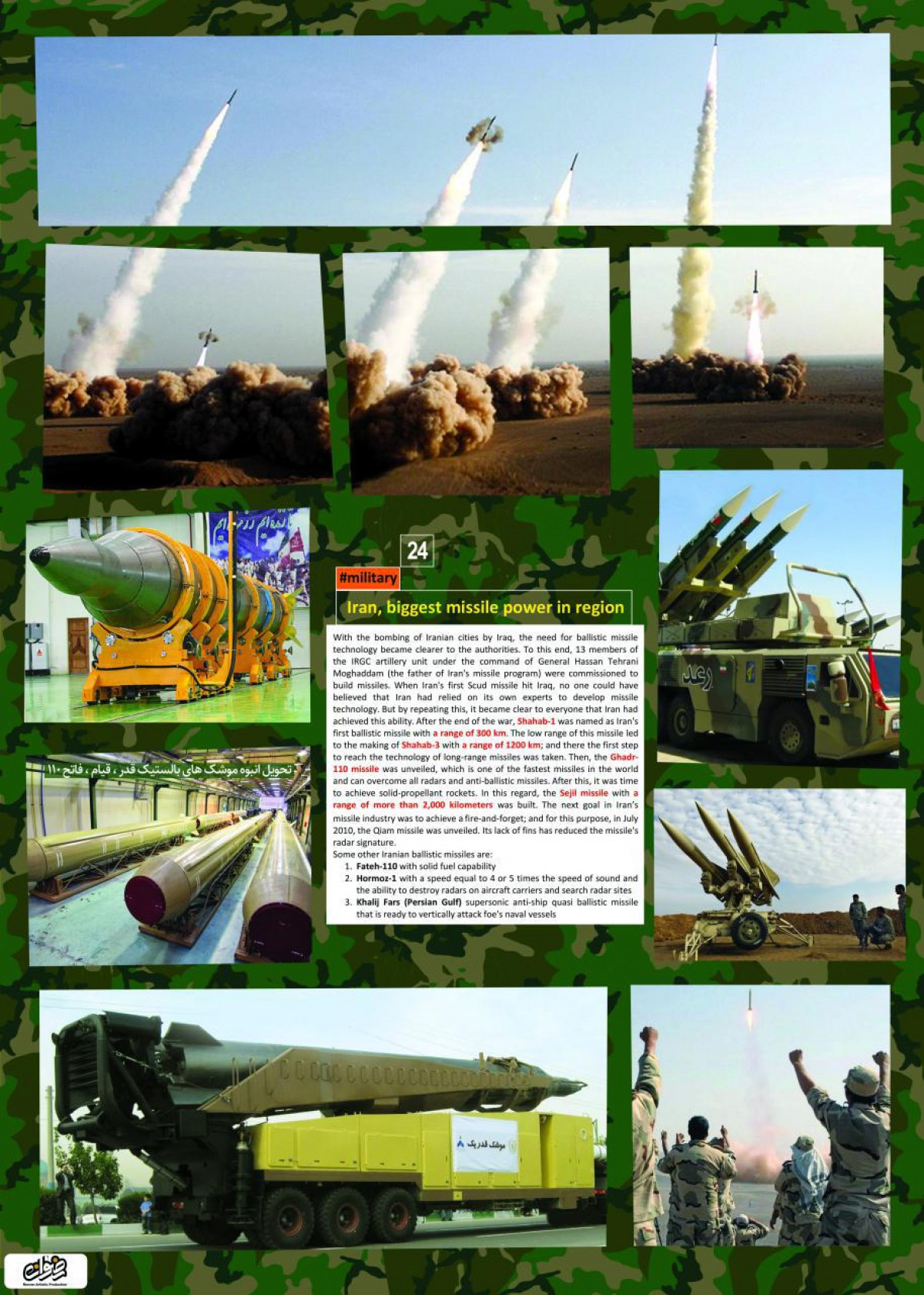 87
87
With the bombing of Iranian cities by Iraq, the need for ballistic missile technology became clearer to the authorities. To this end, 13 members of the IRGC artillery unit under the command of General Hassan Tehrani Moghaddam (the father of Iran's missile program) were commissioned to build missiles. When Iran's first Scud missile hit Iraq, no one could have believed that Iran had relied on its own experts to develop missile technology. But by repeating this, it became clear to everyone that Iran had achieved this ability. After the end of the war, Shahab-1 was named as Iran's first ballistic missile with a range of 300 km. The low range of this missile led to the making of Shahab-3 with a range of 1200 km; and there the first step to reach the technology of long-range missiles was taken. Then, the Ghadr110 missile was unveiled, which is one of the fastest missiles in the world and can overcome all radars and anti-ballistic missiles. After this, it was time to achieve solid-propellant rockets. In this regard, the Sejil missile with a range of more than 2,000 kilometers was built. The next goal in Iran's missile industry was to achieve a fire-and-forget; and for this purpose, in July 2010, the Qlam missile was unveiled, its lack of fins has reduced the missile's radar signature Some other Iranian ballistic missiles are:
1. Fateh-110 with solid fuel capability 2. Hormoz-1 with a speed equal to 4 or 5 times the speed of sound and
the ability to destroy radars on aircraft carriers and search radar sites 3. Khalij Fars (Persian Gulf) supersonic anti-ship quasi ballistic missilethat is ready to vertically attack foe's naval vessels
Comment
Post a comment for this article